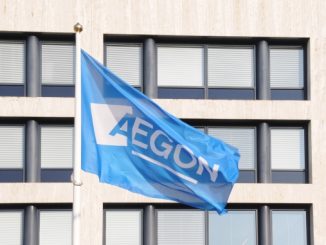
MünchenerHyp issued the first sustainable covered bond today (Wednesday), a Eu300m five year deal that tapped into growing interest in SRI bonds and which the issuer’s head of treasury and an investor who participated in the transaction said will hopefully be the first of many.
Münchener Hypothekenbank unveiled its plans for an ESG (environmental, social and governance) Pfandbrief on Monday of last week (8 September), having solicited a second opinion from sustainability rating agency oekom research based on criteria and a framework developed for the innovative issue. Although issuers with sustainability ratings, including MünchenerHyp, have sold covered bonds before, the issues themselves have not carried sustainability opinions.
Under MünchenerHyp’s structure, the issuer identified cooperative housing loans as collateral within its cover pool that meets oekom’s criteria and has committed to maintaining an amount in its cover pool sufficient for the Eu300m and that meets the standards laid out for the ESG moniker.
After finishing a roadshow yesterday (Tuesday), the issuer went out with the deal yesterday for Eu300m – a size that was earmarked from the start of the project as a first step for the new concept, according to the issuer. Leads Crédit Agricole, LBBW and WGZ priced the transaction at 10bp through mid-swaps on the back of a 1.6 times oversubscribed order book comprising 48 orders from seven countries.
They had gone out with initial price thoughts of the high to mid-single-digits through mid-swaps and after taking indications of interest of Eu500m set guidance of the 9bp area (plus or minus 1bp), according to a syndicate official at one of the leads. The final order book was around Eu500m at 10bp through.
The lead syndicate official said that the re-offer level was 1bp wide of the issuer’s interpolated curve on a mid-mid basis, and 1bp inside on a bid basis, on which basis the deal was marketed.
According to Rafael Scholz, head of treasury at MünchenerHyp, 32% of the book comprised accounts that are dedicated SRI investors, with other investors also possibly buying bonds for SRI portfolios.
“This is an amazing result,” he said. “And most of the SRI accounts have never before bought MünchenerHyp in the primary market.”
Scholz said that the issuer would not normally go out with a Eu300m deal size – sitting in between a private placement size-wise and being smaller than the Eu500m-minimum benchmark size – but that given that a Eu300m amount was on the table, the SRI investors gave the deal momentum and that the ultimate pricing was tighter than what otherwise might have been achieved for a Eu300m deal.
The lead syndicate official said that there would have been more demand for a Eu500m deal that was liquid and included in indices, for example, but that the deal enjoyed the extra SRI demand and that this was less spread sensitive, and he said that overall the issuer had probably achieved a level at least as tight as would have been possible on a benchmark trade.
Scholz also noted that the new investors had entered the market at tight levels.
“But let’s face it,” he added, “we are just taking about a couple of basis points. The big success – and this is the contribution that we have made – has been to bring new investors into the triple-A covered bond world. We can be happy with the pricing – from an issuer’s perspective, it’s an amazing result – but the big goal was to raise awareness among SRI investors to buy the inaugural ESG covered bond.”
Scholz said that during the roadshow investors appreciated the clear concept and framework, and that he hopes that other issuers will build on the trade.
“After a lot of effort and a strong commitment from our management into social responsibility, you can be sure that we will move forward with this concept,” he said. “But we also have to say that we can’t develop the market by ourselves, so I clearly hope that this framework will be adopted by other issuers.
“And after the result we achieved today, I doubt that we remain alone in the ESG covered bond world. Covered bonds is such a huge market and we have to acknowledge that there is a rapidly growing investor demand for socially responsible investments.”
An investor who participated in the deal and for whom SRI is important for all his firm’s portfolios said that although his firm had bought covered bonds before, he welcomed the development of an ESG covered bond.
“We are thrilled to have participated in this first issue,” he said. “I expect more issuers to come to the market now that MünchenerHyp has done the first step.
“And it’s also necessary, because for us this is a somewhat small issue – it’s not a benchmark-sized issue, but we have participated simply to help this market develop. But of course we’d like to see also sustainability coming into the more benchmark-sized issues.”
He said that although his firm has participated in many SRI bonds it does not do so uncritically, “just because the issuer says it’s green”. He said that while he has participated in several green supranational and agency issues, he has rejected some because his ESG research team have questioned their SRI credentials.
He said that in terms of MünchenerHyp’s use of proceeds, the firm is comfortable with the sustainability. He noted that his research team felt that there could be improvements in reporting and said that after participating in the first issue he was looking forward to engaging in a dialogue with the issuer to this end.
Germany took 61.9% of the deal, Austria 18.7%, France 6%, the Netherlands 5%, CEE 5%, Luxembourg 3.3%, and others 0.1%. Banks were allocated 46.7%, central banks 23.3%, funds and insurance companies 20%, agencies and supranationals 10%.



